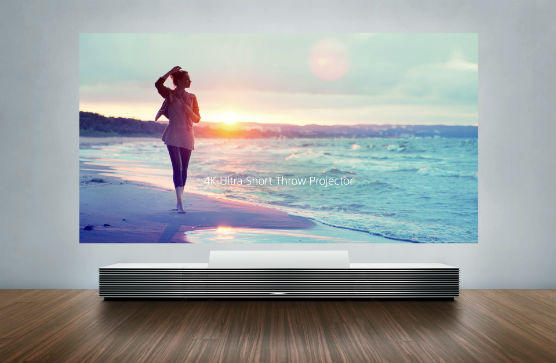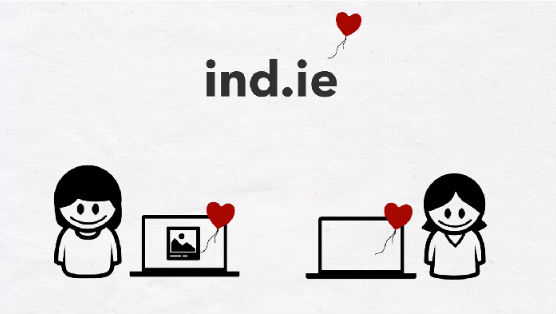Technology is always moving—and it touches every part of our lives. Each year, we see more and more of the reality that only existed in science fiction come to life. In 2014, we saw our fair share of consumer, mass market mobile technological advancement, most notably in the launching of the new smartwatch platform and the continued saturation of the smartphone market.
However, we also saw a big move in technology other sectors as well, including transportation, healthcare, and space exploration. So here are the 10 best technology advances of 2014—the ones that truly had us excited for the future:
10. Virtual Reality Goes Mainstream
Oculus Rift has been the talk of the town for a couple of years now, but after being purchased by Facebook this year, we’ve been seeing the devices pop up in more and more places. At this year’s San Diego Comic-Con, Facebook teamed up with Hollywood to create two unique virtual reality experiences: one for X-Men and one for Pacific Rim. Both of the experiences were made uniquely for the platform and immersed viewers directly into the action. Expect to see a lot more of this in the future as virtual reality technology advances and more of the public gets to try it for the first time.
9. Google’s Contact Lenses Monitors Blood Sugar Levels

Google are taking their wearable technology ambitions even further with a smart contact lens—but it might not be quite what you think. It’s not Google Glass plastered onto your eye. Instead of sending you Google+ notifications, its transmitters are used for an entirely different end goal: monitoring diabetics’ tears for glucose. Google lens are being developed by Google X, the offshoot of the tech giant that handles their most ambitious and risky projects such as Glass and self-driving cars. These lenses see Google moving further into wearable technologies and crossing over into healthcare tech.—Jonathan Keane
8. Ultra Short Throw 4K Projector is the Future of the Television

The Ultra Short Throw 4K Projector was immediately one of the coolest things to come from CES at the beginning of this year. We still view projectors as clunky, old technology, but Sony is looking to change that with its newest possible addition to your living room. It’ll take an entire wall of your living room, but with its beautiful, unobtrusive design, it fits in with the modern home pretty well. Say hello to the future of living room screens.
7. HP Sprout Touch Mat Reinvents the Workstation
The real technological wonder of HP’s Sprout Touch Mat isn’t in the development of brand new technologies, but instead in how the device uses pre-existing technologies together to do something entirely new. The idea behind Sprout is to reinvent the digital workspace, using a an overhead projection camera that can detect finger/hand gestures, track objects, and even interact with them in unique augmented reality use cases. Most importantly, it has an interesting take on how the world of touch screens and traditional desktop computers might interact and function in a universal, digital workstation.
6. Ind.ie Takes the Internet off the Grid

Every few weeks it seems that companies like Google, Facebook and Twitter are in the spotlight for issues around security and privacy. Each time the public is able to catch some small glimpse behind the curtain of what these companies are doing with all of the personal information they control, there is inevitably a backlash, followed by some sort of apology or explanation from the company.
If thinking about that is a little too bleak for you, fear not, for Aral Balkan and his team have been hard at work for much of the last year on developing alternatives to the “Spyware 2.0” (Balkan’s own terminology) technologies like Dropbox, Facebook, Google, and even your smartphone. The idea of an independent, private Internet feels like something of an oasis in the post-Snowden era.—Michael Sarason
5. Hoverboards Are For Real
We’ve been waiting our whole lives for a real hoverboard and we were all successfully faked out earlier this year by Funny or Die’s video stunt involving Tony Hawk and Christopher Lloyd and a fake company called HUVr. The whole thing came out as a hoax though shortly after, to the disappoint of people all across the Internet.
Fortunately, we also got an actual working Hoverboard this year: the Hendo Hoverboard. Tony Hawk redeemed himself by being in that video as well, but this time it would be for the real thing. The project was successfully funded for over $500,000 on Kickstarter, so get ready to start seeing these things out in public in the next year or so.
4. Computer Chips are Becoming More like Human Brains
The idea behind the development of neuromorphic chips is to make them a bit more like us—and in turn, make computers better at navigating and modeling human behavior. These neuromorphic chips, being developed by companies such as Qualcomm, are designed to perceive beyond just their programming, such as being able to process sensory data and react accordingly. It’ll have a huge effect on robotics in the next few years and continue reshape the way we think of computers and our relationship with them.
3. Orion Test Flight Leads the Way for Human Mars Landing
The recent NASA Orion test flight has finally gotten Americans excited about the future of space travel. The test has set the groundwork for future Orion launches, which includes planned manned deep-space trips to an asteroid and Mars. Those might not happen right away, but now that the first test flight has happened we couldn’t be more excited about what it could mean for the future.
2. Self-Driving Cars Will Be Everywhere
When we talk about self-driving cars these days, we’re not just talking about the one made by Google without a steering wheel. Everyone from Tesla to Audi are testing and implementing self-driving technologies to put in their high-end vehicles. While none of them are doing anything as extreme as Google, clearly the influence is being seen across the industry as the desire for self-driving features grows.
1. Google’s Cancer-Detecting Pill

Google pushed strongly in the world of healthcare this year with its glucose-detecting contact lenses, the Google Genomics cloud storage project, and most notably, its new cancer-detecting pill. The pill contains magnetic nanoparticles that attach themselves to cancerous molecules that may or may not be flowing through your bloodstream. The pill would then actually be able to notify you on your wearable device whenever it has accomplished its cancer purging. Even though it’s still years from hitting the market, it’s one of those game-changing technologies that only Google has the money, intuition, and ambition to create.